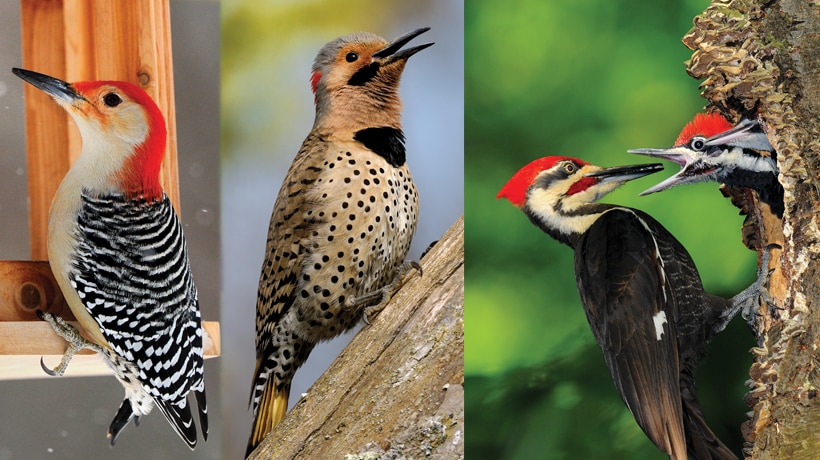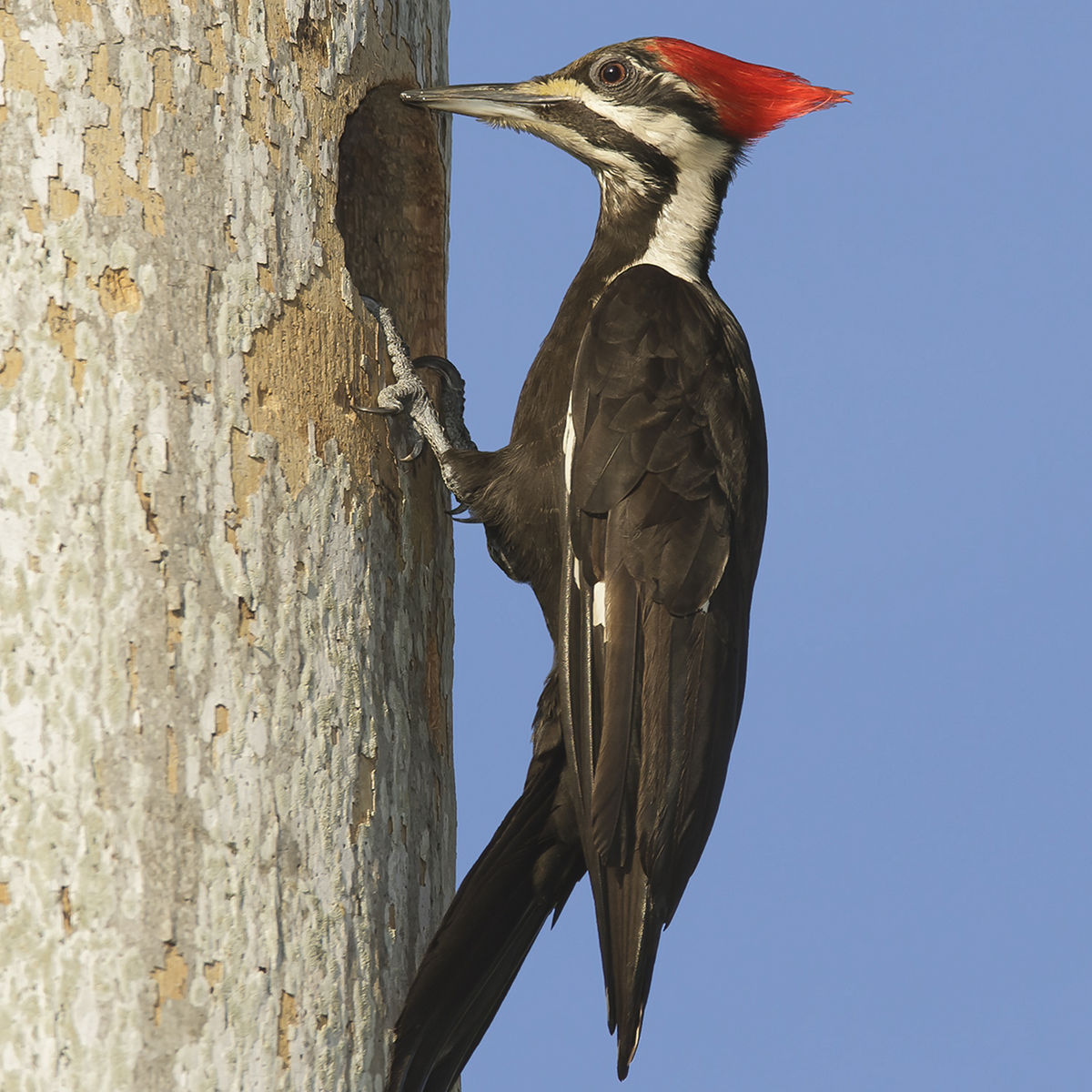Woodpeckers: A Comprehensive Guide to Understanding These Unique Birds
Woodpeckers, with their distinct behaviors and physical features, have long astounded the curiosity of ornithologists and nature fanatics alike. As we explore the detailed anatomy, varied species, and environmental value of woodpeckers, a deeper admiration for these distinct birds and the enigmas they hold unfolds.

Woodpeckers' Drumming Actions
Woodpeckers show a balanced and exact drumming habits that serves numerous essential features in their every day lives. This actions is mostly connected with communication, territory protection, and foraging. The distinct drumming audio is developed by the fast pecking of their beaks against hard surface areas such as tree trunks, branches, or also metal objects.
Interaction is a critical element of woodpecker habits, and drumming plays a considerable role in this procedure. Woodpeckers utilize drumming to establish their visibility, bring in companions, and maintain call with their partners and spawn. The regularity, intensity, and period of drumming sequences convey details messages to other woodpeckers in the area.
In enhancement to interaction, woodpeckers make use of drumming actions for area defense. Woodpeckers in Florida. The loud and recurring drumming offers as an alerting to potential intruders, signifying that the area is already asserted. By establishing their territory with drumming, woodpeckers reduce the chance of problems over useful resources such as food and nesting sites
Moreover, woodpeckers likewise employ drumming as a foraging method. The balanced pecking assists them situate insects hiding under the bark of trees by creating resonances that disrupt the victim's concealment. This habits showcases the flexibility and resourcefulness of woodpeckers in using their drumming abilities for numerous crucial functions.
One-of-a-kind Adaptations for Tree Climbing
Having mastered the art of drumming to communicate, safeguard territory, and forage, woodpeckers have developed special adjustments that promote their remarkable climbing up capabilities in their arboreal environments. Woodpeckers have zygodactyl feet, with 2 toes directing forward and 2 toes directing in reverse. These tail feathers give security and equilibrium, enabling woodpeckers to steer up tree trunks with precision and dexterity.
In addition, woodpeckers have effective neck muscle mass and a special skull framework that help in their climbing capabilities. Their strong neck muscles allow them to rapidly eat tree bark without experiencing whiplash, while their thick head and tiny mind serve as shock absorbers, safeguarding them from the effect of duplicated drumming. These adaptations jointly allow woodpeckers to browse the vertical globe of trees with efficiency and grace.

Role of Woodpeckers in Ecosystems
Playing a crucial duty in forest communities, woodpeckers add dramatically to the balance and i loved this wellness of their environments via their distinct actions and communications with various other species. One of the crucial eco-friendly functions of woodpeckers is their duty in managing insect populations. By foraging for insects under the bark of trees, woodpeckers aid regulate insect populaces, avoiding outbreaks that might damage the total health of the forest. Additionally, woodpeckers produce dental caries in trees that act as important nesting sites for a range of other bird varieties, promoting biodiversity within the ecosystem.
Moreover, the drumming and vocalizations of woodpeckers play a vital role in interaction and area facility. These sounds not just serve to bring in companions however also help define borders in between various woodpecker territories, lowering conflicts and advertising an unified conjunction within the forest neighborhood. In general, the visibility of woodpeckers in woodland environments highlights their importance as keystone types, influencing the dynamics and working of these habitats in diverse means.
Makeup: Specialized Beaks and Feet
In the complex internet of forest ecosystems, the specialized beaks and feet of woodpeckers are important adaptations that enable them to satisfy their important environmental functions. Woodpeckers have one-of-a-kind physiological functions that are especially made to help them in their foraging and nesting behaviors.
The most distinguishing characteristic of woodpeckers is their strong, chisel-shaped beaks. These beaks are perfectly adjusted for drilling right into wood to reveal bugs, larvae, and sap surprise beneath the bark of trees. The strong muscles and strong structure of their beaks enable woodpeckers to eat a rate of approximately 20 times per second without causing damage to their heads.
In addition, woodpeckers have specialized feet that help in their acrobatic climbing capacities. Their feet have two toes directing onward and two toes pointing backward, providing a solid hold on vertical surfaces (Woodpeckers in Florida). This distinct foot arrangement, together with stiff tail plumes that serve as a helpful prop, permits woodpeckers to stick to tree trunks and branches with ease while they look for food or excavate nesting cavities
Woodpecker Species Diversity
What elements add to the impressive variety of woodpecker types throughout different environments and areas? Woodpeckers are a varied group of birds discovered throughout numerous environments worldwide, with over 200 well-known types showing adaptations to various atmospheres. One vital factor driving this variety is the accessibility of suitable habitats. Woodpeckers have actually evolved to populate a directory variety of settings, from woodlands and timberlands to meadows and deserts, each presenting unique challenges that have actually influenced the evolution of distinct woodpecker varieties.
One more adding variable to woodpecker types diversity is their specialized feeding behaviors. Various my response species have evolved to exploit different food resources, such as pests, tree sap, fruits, and nuts, leading to the advancement of details adjustments in beak shape, size, and stamina. These adaptations allow woodpeckers to forage efficiently in their particular habitats, minimizing competitors amongst species and advertising niche distinction. In addition, geographical isolation and historic factors have actually contributed fit the circulation and variety of woodpecker species, bring about the vast range of specialized adaptations seen in these fascinating birds.

Verdict
Finally, woodpeckers are interesting birds that display special drumming actions, specialized adjustments for tree climbing, and play vital functions in ecological communities. Their composition, consisting of specialized beaks and feet, permits them to thrive in their environment. With a diverse series of woodpecker species discovered worldwide, these birds are necessary for keeping the health and wellness and equilibrium of forests and forests. Comprehending and appreciating the intricacies of woodpeckers can supply useful insights right into the environment.
Comments on “Indigenous Woodpeckers in Florida: A Guide to Types and Behaviors”